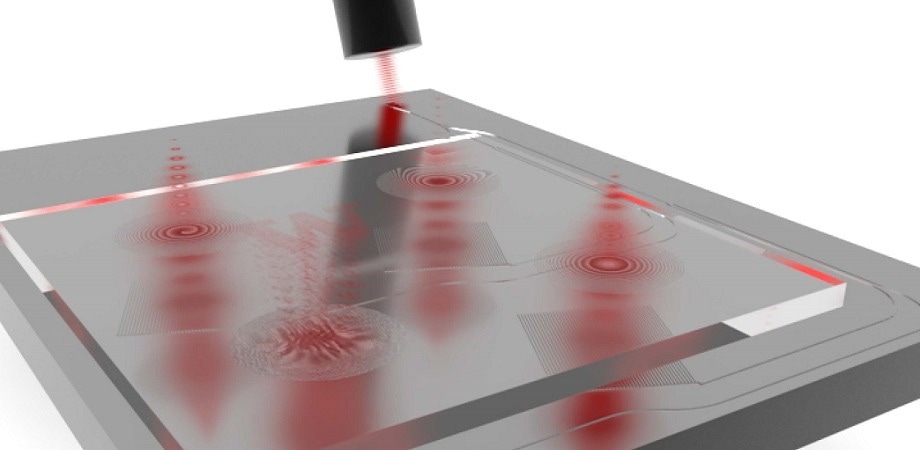The new technological signs of progress have offered a notable capacity to control and manipulate light waves, paving the way for several applications in different fields, including optical communication, imaging, sensing, energy, and quantum computing.
 A photonic integrated circuit guides input light received from an optical fiber to a separate meta-optics chip, which bends the light into desired shapes in free space. Image Credit: Tanguy et al., doi 10.1117/1.APN.2.3.036012
A photonic integrated circuit guides input light received from an optical fiber to a separate meta-optics chip, which bends the light into desired shapes in free space. Image Credit: Tanguy et al., doi 10.1117/1.APN.2.3.036012
At the core of this advance are photonic structures that can regulate light waves, both at the free space as meta-optics and chip level, in the form of photonic integrated circuits (PICs). Integrating these structures facilitates the formation of compact optical systems.
The PICs can be employed to make slight alterations to the light wave, like manipulating its intensity and phase to gain a needed finding, which can then be directed in free space by meta-optics. Those combined systems can regulate qubits for power light detection and quantum computing, along with ranging systems such as the ones employed for mapping and autonomous vehicle navigation.
As PICs employ nanometer-scale waveguides to limit and guide light, combining their light to and from bigger devices, like optical fibers, is challenging. Commonly, grating couplers are employed for this reason—thanks to their grating structure that can diffract light passing in or out of the waveguides of PICs. Nevertheless, such devices can only shape the light wave to a particular degree, which confines their usability.
Taking this limitation into consideration, meta-optics with the capacity of manipulating optical wavefronts with arbitrary shapes have been proposed to combine light from PICs. No multifunctional coupling between PIC and free space has still not been reported, even if the method seems promising.
At present, in the research reported in Advanced Photonics Nexus, scientists from the University of Washington, have established a chip-scale hybrid PIC/meta-optical platform comprising a photonic integrated circuit with gratings below a separate meta-optics chip.
The PIC consists of 16 similar gratings assembled in a 2D array, all with an aperture size of 300 micrometers and coupled to an optical fiber using a grating coupler. Such gratings act as waveguides and guide light between the fiber and the meta-optics chip, which outputs and shapes light to free space, parallel to the input light.
Using an array of low-loss meta-optics, we have developed a flexible and interchangeable interface between a photonic integrated circuit and free space.
Arka Majumdar, Senior Author and Associate Professor, University of Washington in Seattle
With the use of this platform, the scientists could concurrently send light through 14 PIC gratings and then shape the conforming beam with 14 different meta-optics, like vortex beam generators, meta-lenses, extended depth of focus lenses, and holograms.
Meta-optics has the ability to shape optical wavefronts to create a multifunctional interface between free-space optics and integrated photonics. This study exploits that. All the light beams that come out of the PIC are identical, but by placing different meta-optics on top of each grating, we were able to simultaneously manipulate the beams individually.
Arka Majumdar, Senior Author and Associate Professor, University of Washington in Seattle
In the team’s experiments with varied meta-optics, the scientists discovered that the device worked highly and accurately, even with no early knowledge of the input light or the requirement for precise alignment between the two chips. In specific, they attained a diffraction-limited spot of three micrometers and a holographic image with a peak signal-to-noise ratio of over 10 decibels.
The notable characteristic of the suggested device is its capacity to alter its functionality by just exchanging the meta-optics associated with the PIC. This enables a broad range of potentials for modifying and controlling light beams with a high degree of error tolerance. The possible applications of this interface are diverse, and they include structured light generation, beam steering, optical trapping, and manipulation of cold atom qubits.
Journal Reference:
Quentin A. A. T., et al. (2023) Multifunctional interface between integrated photonics and free space. Advanced Photonics Nexus. doi.org/10.1117/1.APN.2.3.036012